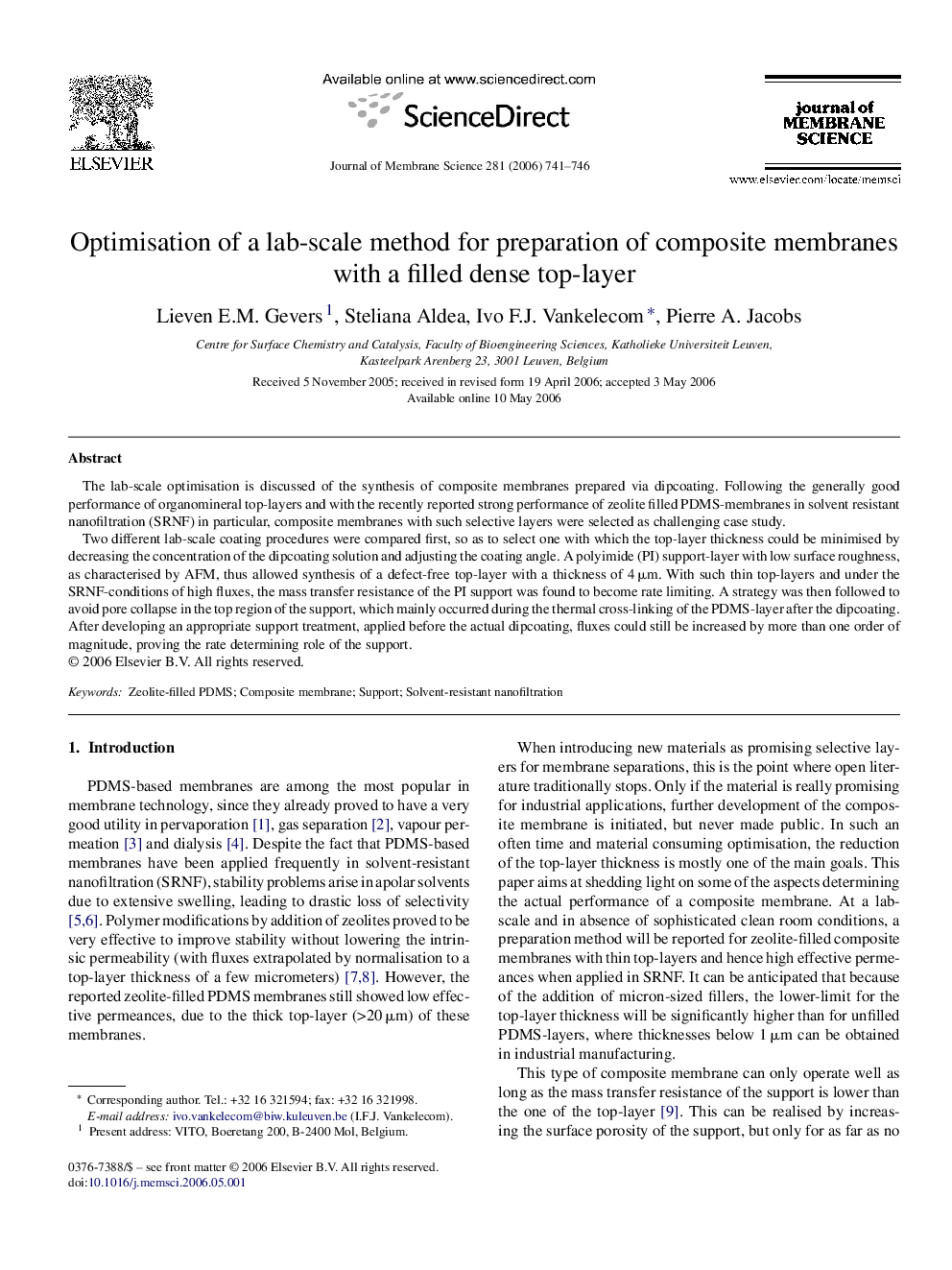| Article ID | Journal | Published Year | Pages | File Type |
|---|---|---|---|---|
| 639329 | Journal of Membrane Science | 2006 | 6 Pages |
The lab-scale optimisation is discussed of the synthesis of composite membranes prepared via dipcoating. Following the generally good performance of organomineral top-layers and with the recently reported strong performance of zeolite filled PDMS-membranes in solvent resistant nanofiltration (SRNF) in particular, composite membranes with such selective layers were selected as challenging case study.Two different lab-scale coating procedures were compared first, so as to select one with which the top-layer thickness could be minimised by decreasing the concentration of the dipcoating solution and adjusting the coating angle. A polyimide (PI) support-layer with low surface roughness, as characterised by AFM, thus allowed synthesis of a defect-free top-layer with a thickness of 4 μm. With such thin top-layers and under the SRNF-conditions of high fluxes, the mass transfer resistance of the PI support was found to become rate limiting. A strategy was then followed to avoid pore collapse in the top region of the support, which mainly occurred during the thermal cross-linking of the PDMS-layer after the dipcoating. After developing an appropriate support treatment, applied before the actual dipcoating, fluxes could still be increased by more than one order of magnitude, proving the rate determining role of the support.
